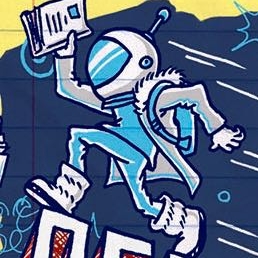‘Ford vs. Ferrari’ vs. the book: A review of A.J. Baime's ‘Go Like Hell’
I remember three things about this book: First, I liked it. Second, always wear your seat belt. (Apparently, in the early 1960s, that was considered unmanly, which is why there are not a lot of old racers left who can talk about those days.)
Anyhow, the movie Ford vs. Ferrari is upon us. It’s based on A.J. Baime’s Go Like Hell, which really is a much better title, don’t you think?
I wrote this back in 2009 for The Dallas Morning News. It’s no longer available on that site, so I am reposting here.
Not long before I wrote, I’d been hanging out with a bunch of smart people at an NEA fellowship. This was one of the first times I was really able to apply what I had learned. The writing is a little over the top for me – I’m not one to go like hell, but I pushed myself because that matched the spirit of the book. I think it holds up well. You tell me.
June 21, 2009
Chrome, sweet chrome: A.J. Baime shares the revved-up thrills of '60s auto racing at Le Mans
By MICHAEL MERSCHEL
Like the cars it describes, Go Like Hell is a streamlined marvel built for speed, fueled by testosterone and likely to elicit happy grins from anyone who has ever heard music in the squeal of a tire or the roar of an engine.
Playboy editor A.J. Baime takes readers back to the early 1960s, when auto racing was a brawny, bloody affair, when seat belts were considered unmanly and spectacular deaths were commonplace.
And "the greatest automobile race in the world," he says, was the endurance contest in Le Mans, France, where drivers battled on an 8.36-mile course in what was described as "a four-hour sprint race followed by a 20-hour death watch."
A business deal gone sour made this contest personal for two titans: Enzo Ferrari and Henry Ford II.
Ferrari was an international enigma, "a man who built racing cars but refused to attend races. Who worked tirelessly to perfect state-of- the-art machines yet feared elevators." His cars were "built by Italian artisans, every detail down to the steering wheel handcrafted using some of the same methods used to make Roman suits of armor." At the 1963 Le Mans race, his cars placed first, second, third, fourth, fifth and sixth.
Ford was the industrial scion who had saved his grandfather's company from ruin and now coveted the European market - and the millions in sales that would come from victory at Le Mans, "the most magnificent marketing tool the sports car industry had ever known." His directives were as clear and as blunt as the card he handed an underling on race day: "You better win. HF II."
Even with the millions of dollars at his disposal, winning would be no easy task. Ford's team would have to create a car that would be durable enough to race for 24 hours straight at speeds beyond 200 mph, covering the length of a football field every second. At the time, Ford had never even managed to build a car that could outrace a Corvette.
Key to Ford's dream was an overalls-wearing Texan, Carroll Shelby, who cut his racing teeth in races in Grand Prairie and Fort Worth. Shelby was recruited to drive for Ferrari and, with his own personal band of gearheads, went on to create a Ford-powered car that outraced any committee-built product the corporation had been able to produce.
In the same way that Shelby straddled the worlds of Ford and Ferrari, this book straddles eras. At its beginning, a driver's instinct and a designer's vision are enough to win. At the end, cars are being analyzed by computers and tweaked by teams of engineers. And the carnage among drivers, both on the track and off, is beginning to force automakers to factor safety into their efforts.
Baime never gets bogged down in technical details and only rarely slips into hyperbole. ("The pavement beneath his feet was drenched in glory, courage, honor and blood.") He merely hits the gas, pops the clutch and takes readers on a red-blooded ride to glory that will have them smiling all the way to the checkered flag.
Go Like Hell
Ford, Ferrari and Their Battle for Speed and Glory at Le Mans A.J. Baime
(Houghton Mifflin Harcourt, $26)

